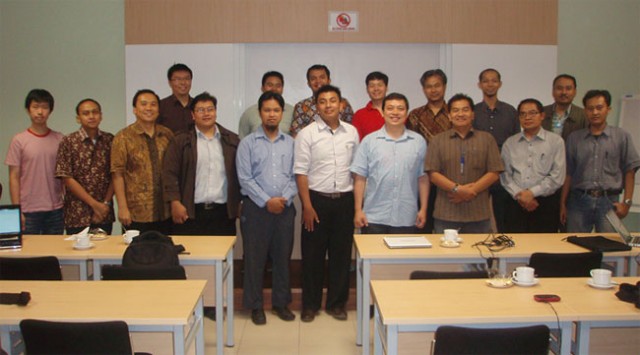
Aligned with BINUS INTERNATIONAL’s effort in cultivating focused research interest groups among its faculties, the Research and Development Department of BINUS INTERNATIONAL, in collaboration with the Computer Security Incident Response Team (CSIRT) and the Indonesia Honeynet Project organized the 4th JWC Research Forum on 7th September 2012. The event, which was held in BINUS INTERNATIONAL’s fX Campus, was able to draw together experts from the computer and network security fields along with academics. A total of five presenters shared their research updates from these academic and practice-based perspectives.
As one of BINUS INTERNATIONAL’s active researchers, Erwin Adi opened the research forum by presenting his early stage study in developing a security program which was inspired by the human body’s immune system. The program will immediately respond when it detects any malware attack. However, just like a real virus, malware can also mutate. Therefore, the artificial immune system that Erwin is developing will be able to detect malware when it first enters, and then consider the most appropriate response for that specific attack and its permutations through an adaptive immune system.
Following the initial presentation, I.G.N. Mantra was the second presenter to share his study regarding the security system problems that occur in universities across Indonesia. During his session, he also shared several security trends to watch out for as well as detailing the major attacks that have occurred in Indonesia.
The forum continued with Charles Lim, who shared information regarding a voluntary computer security research organization known as the Honeynet Project. The main purpose of this organization is to study any threats against Internet security systems across Indonesian academic institutions as their preliminary step. Subsequently, the project aims to target broader audiences, including Indonesian companies, industries, as well as governmental institutions. As the leader of the Indonesian chapter, Charles introduced the audience to the code of conduct of Honeynet.
The next presentation was delivered by Digit Oktavianto. Digit shared his experience of developing a personal malware lab as part of a proactive approach to battling against Internet security threats. He listed four mains steps in building a personal malware lab: allocating physical or virtual space for a lab, isolating the lab system, installing behavioral analysis and code analysis tools, and utilizing online analysis tools.
The last presenter was Solikin, who closed the research forum by sharing a management model for the Computer Security Research Group (CSRG). He mentioned that there are plenty of opportunities available for CSRG development in almost all of the regions of Indonesia.
The forum was extremely beneficial to the audience. An enormous number of questions as well as comments that were made during the whole forum proved that collaboration between academics and industry practitioners is critical in building Indonesian awareness about computer and network security. (ASR)
